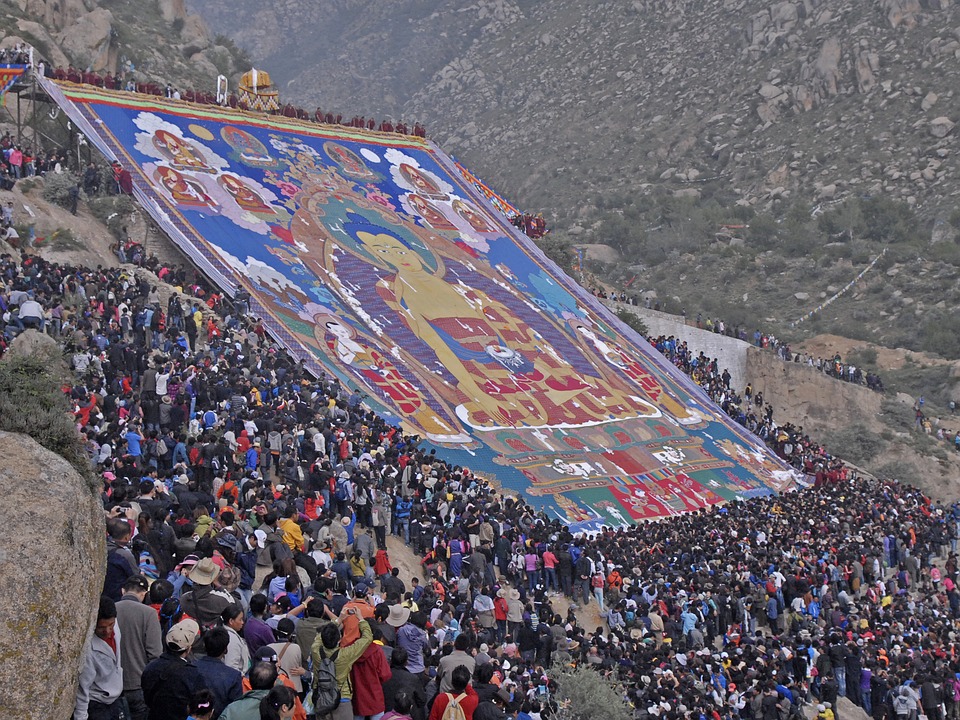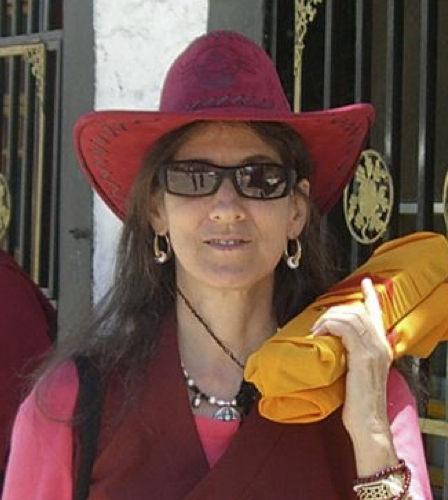
My work in religion focuses on Buddhist philosophy, practice, and the liturgical traditions of India and Tibet. My experience of religion is broader: born Jewish, raised Protestant, with compelling memories of attending Catholic Mass with a Catholic friend every New Year’s day from sixth grade through high school. Other than that, by the time I was thirteen my parents, due to their own divergent views, took a hands-off approach to me and religion. Left to my own devices, I morphed to a comfortably agnostic posture until I encountered Buddhist thought, language, and literature in graduate school and then in situ in Tibetan communities in India and Nepal. I mention this by way of underscoring an underlining principle of Christian Smith’s Religion—that the hows and whys of religion’s impact on our lives derive as much from our historical, familial, and personal location as from the actual traditions we contact. They interact with every component of our lives, and with each other. They impact not only how we view our own religious tradition, or lack thereof, but the degree of distance we feel toward “other” religions. They also impact the kind of gulf contemporary cultures construct between “religious” and “secular” (which doesn’t really exist in traditional cultures) as well as the contemporary intermediate zone of “spiritual but not religious.”
The importance of remembering this interactive dynamic grows ever more evident. Christian Smith’s laudable wish to “generate new fruitful research” that furthers such reflection animates his book and inspires my reflections here. In practice, religion may be institutional, inherited, haphazard, or even professional. But it is always personal. Lived experience therefore provides a good starting point.
The Presumption of Otherness
In my case, entering the arena of Tibetan Buddhism when it was still little known in the West, much less in the academy, meant often being the only Buddhist scholar or practitioner at conferences or social gatherings. Nonetheless, I still feel a possibly naïve amazement at how “other” my friends seemed to perceive the cultural matrix of Buddhist thought and practice. This was true even of friends whose education, family backgrounds, and general worldviews are very similar to mine. True, most of them hadn’t lived in Asia or in Buddhist communities as I had, just as I had not shared important areas of their life experience, including their religious background. Yet, overall our easy conversation and body language suggested that we inhabit a shared linguistic and symbolic universe. But Buddhism seemed curious, if not outright strange, to them.
As I reflect on this, a memory resurfaces. Some years ago I was invited to be part of a public discussion among four scholars of religion. As often happens, though thankfully a little less so today, all of us were white and US-born. I was the only female, and also the only Asian religionist. The discussion was friendly enough, and probably bland as well. Afterwards, as we rose from our seats to say goodbye to each other, one colleague from another University said, in the same friendly tone, “You know I always find it difficult to talk with someone from a tradition without a Creator God.” “Really? Why is that?” “It’s just difficult. It’s so different.” Mind you, he and I were both educated in the Western academy, and grown up in families where Christianity was important. For my part, based on my mother’s regularly reading Bible stories aloud to me before I could read myself, and also perhaps due to my church going, however modest, I was comfortable with Jewish and Christian ideas of creation. Even though they were no longer part of my explicit belief-identity, they will always be part of my “born in the USA” identity. And as I learned more about Buddhism, I also came to feel that even traditions that looked so different on the surface had enough in common not to seem so very strange to each other.
Western monotheisms understand that a Creator with infinite creative power brought forth this world and its inhabitants. This Creator also indicated how we are to behave toward our fellow human creatures. On the one hand, there is the golden rule, “Do unto others….” That seems a pretty clear instruction, though we see it enacted or dismissed in wildly different ways by self-identified Christian groups. And of course the Ten Commandments aren’t the only behavioral referent. Biblical passages such as “an eye for an eye” complicate things. However, the larger truth is even a relatively homogenous understanding of creation does not mean that the “what then”—the way believers actually behave toward other living beings—is not extremely variable. Antipathies and estrangements among and within traditions are so widespread that we may presume them normative and unassailable.
It is also the case that Western monotheisms distance themselves more vigorously from “other” traditions than is common in much of Asia, where participation in multiple traditions are common. Japanese say they are born Zhinto, marry as Christians, and die Buddhist. That’s not to say there isn’t seriously politicized and racialized religious friction, but the overall cultural compass is broad.
Yet, if we consider things more or less objectively, it is not at all obvious why, in the face of so many basic and clearly evident human commonalities, these particular religious differences should provoke such powerful feelings of otherness, disdain, or downright enmity, with respect to people who are, in most ways, very much like ourselves. And really, every human being is much more like us than not. When we study medicine, biology, even the arts such as dance and music, we understand this. But when we study religion, do we take it for granted that difference dominates? Scholars, as well as other cultural custodians including politicians, bear some responsibility for this. Nonetheless, as is often observed, expressions of love and illuminating knowledge are a crucial essential of virtually all religious, spiritual, and humanitarian traditions. To love the divine or, in the secular context, to choose equality, is to loosen one’s own fixed sense of identity in ways that conform with Christian ideas of “becoming like a child” to enter the Kingdom, with Sufi ideas of recognizing the Friend in everyone, and Buddhist ideas of recognizing one’s true face and thereby finding a potential Buddha in every being. Sameness, or at least a potential for connection, surfaces right along with difference.[1]
The Wholeness of Infinite Variety

Religion, like language and like life itself, is infinitely various. A moment’s reflection establishes that variety and change are perhaps the most ubiquitous characteristics of everything we encounter. Yet, when it comes to religion and to culture more generally, we humans often exhibit powerful expectations of sameness, and seem surprised, if not dismayed and even violent, when we don’t find it., Does narrowing our focus to particulars cloud the larger compass in which multiple styles all participate? Even if not, it seems clear that awareness of that compass gives all of us a wider berth as humans. Some folks sing well, others dance with special grace, still others leap over hurdles, swim, or run at record speeds. All display a capacity that nearly everyone possesses, if to a lesser degree. Recognizing the infinite variety of song, dance, and physical prowess across cultures helps us appreciate that our own expressions are part of something larger than any one modality can reveal. Do we not in fact often recognize this, at least implicitly, when we take pleasure in art or ways of being associated with traditions quite different from our own and which, partly for that very reason, surprise and delight us?
My colleague who found it difficult to converse with a tradition lacking a Creator deity overlooked a crucial matter. Virtually every tradition, great or small, is preternaturally interested in the issue of creation. We all want to know how we got here. Even Confucianism, which doesn’t look into creation as a past event, is nonetheless deeply concerned with creating a humane present and future. Why is this shared interest in creation not more compelling than the different narratives about it?
Monotheistic communities focus on believers’ relationship with the Creator—love, obedience, above all a sense of belonging to something of ultimate grandeur, power, and meaning. This relationship generally undergirds a sense of responsibility for self and kindly conduct toward others. Other traditions emphasize not a creative person but the emergent creative process itself. Buddhists for example take great interest in causal properties of intentions and actions, and thus are dedicated to reducing reactivity, thereby setting in motion positive causes through ethical, kindly behavior.
Regardless of how a tradition characterizes the forces of which we are all the fruition, it pretty much always concludes that some type of love and understanding is key. Moreover, when we look at these varied iterations, we find, as has often been noted, that the moral outcomes are disarmingly similar.
Yet, we often fasten on the arguably much less significant differences, dividing the world, our cities, neighborhoods, even families, accordingly. There are, however, compelling reasons to recognize that no matter how we understand creation, whether we believe, with Buddhists and Hindus, that the universe is born through our own actions, or see through the eyes of Jews, Christians, and Muslims that it arises through divine agency, we easily conclude that we are all the children of the same powers that be. We can interpret creative powers differently while still recognizing they are something we all share. Recognizing and calling out this variegated wholeness is a sameness that makes a difference.
[1] See Klein, “The Knowing Body” in Women and Interreligious Dialogue, eds. Catherine Cornille, Jillian Maxey.

